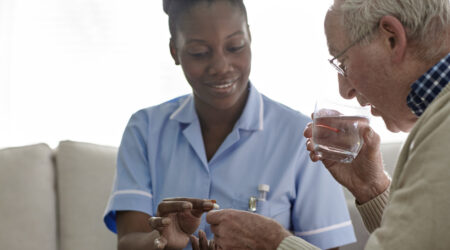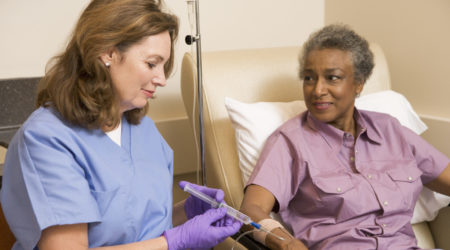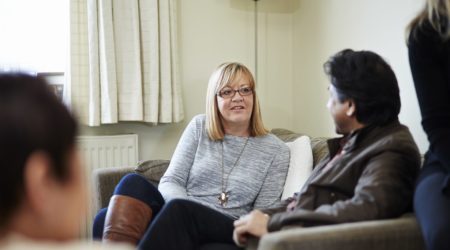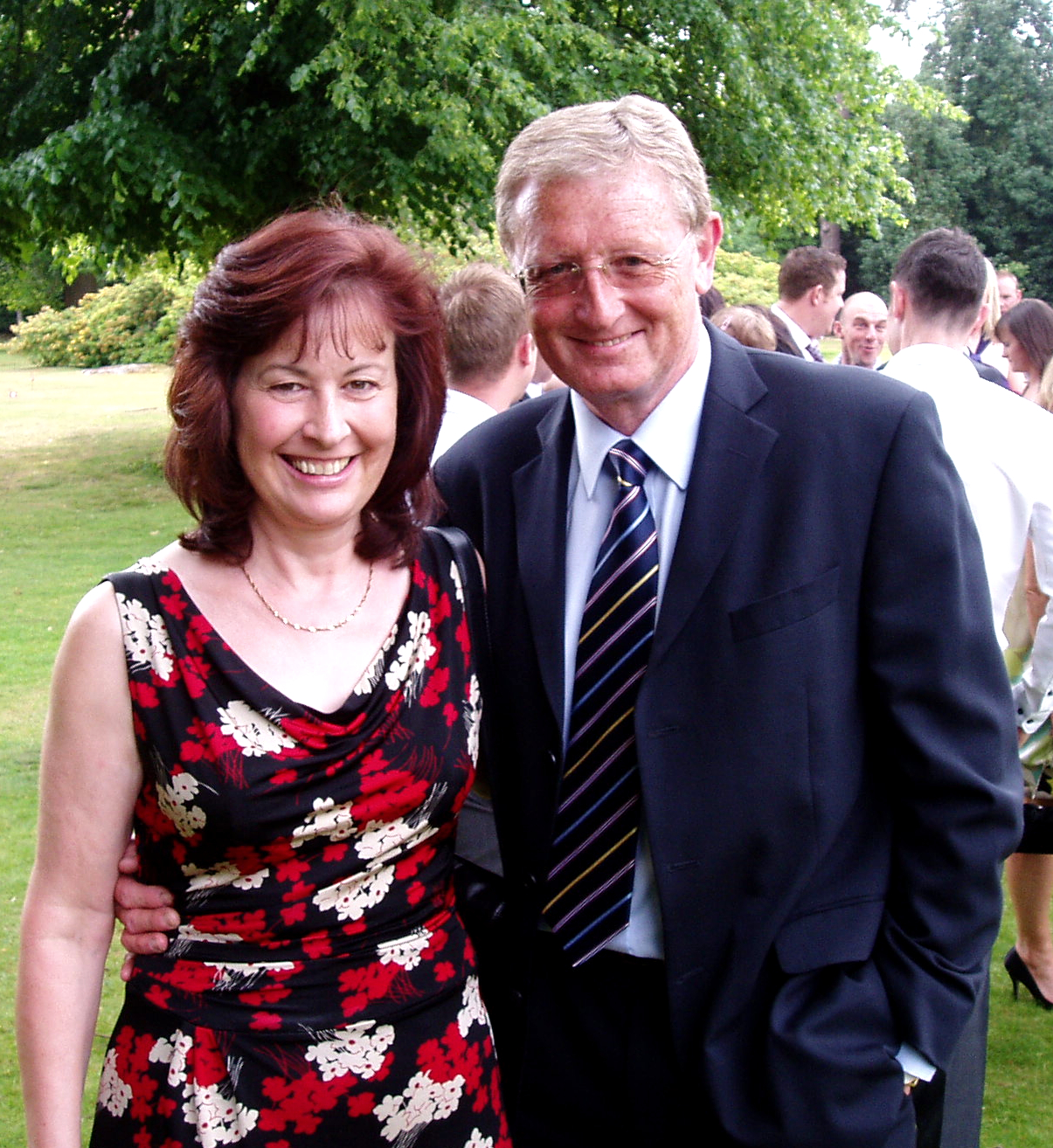

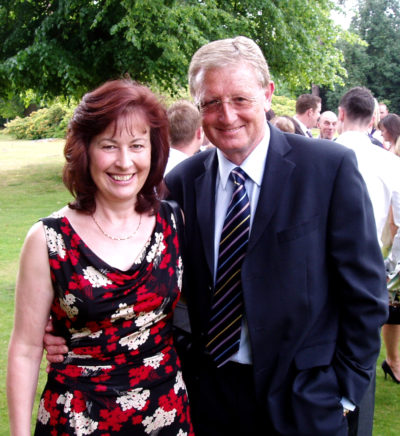

Michael
Michael was diagnosed with pancreatic cancer in 2016. He had surgery and chemotherapy and shares his experience and recovery.
My journey didn’t start with any of the regular signs or symptoms. In summer 2016 I decided to retire completely from work and to spend time with my lovely wife of 46 years, Cathy, exploring those parts of the UK and the world that we had not yet seen. Life looked rosy and my prospects for the future were bright and exciting.
In September we returned from a short holiday in Shropshire. Physically I felt fine. I wasn’t losing weight and I was able to do everything I wanted to (within the confines of being 63 and having 9 years previously had open heart surgery).
Within a few weeks I was experiencing very bad itching all over my body. It felt like the itching you get when bitten by a midge in the garden on a damp, warm evening. It got worse and worse and was occurring everywhere from my head to the soles of my feet. Sleep was almost impossible and I was virtually falling asleep from sheer exhaustion. As my skin warmed the itching became worse. The only thing that helped was to bathe the area in freezing cold water. It was surreal to be sitting naked in a bath of freezing water at 3am.
Diagnosis
My GP started various tests to diagnose my problem and at that point it only felt like a temporary thing that would be ‘cured’ soon. It wasn’t. My skin began to turn yellow and the doctors diagnosed jaundice. The itching persisted despite a variety of potions, creams and tablets. In early November I was hospitalised with it and an endoscopy showed that something was blocking my bile duct.
A stent was put into the duct opening and this resolved the itching. But it was only temporary. Within days the itching was back with a vengeance. Another endoscopy was performed and the blockage was found to be larger and was now actually crushing both the stent and the duct.
Late November arrived and a biopsy eventually solved all the dilemmas. (Phew what a relief – Not). The blockage was found to be at the opening of the pancreas (the ampulla). It was diagnosed as Adenocarcinoma. Many fancy latin sounding terms were used, but when all was said and done it boiled down to a simple phrase. “You have pancreatic cancer”.
I was faced with two options, a ‘Whipples’ operation or to do nothing and die. Needless to say I immediately chose the ‘Whipple’s operation.
Whipple’s procedure and recovery
Within weeks of my diagnosis I was in hospital under the care of the consultant surgeon. He did tell me that it wasn’t going to be until he had “opened me up” that he would definitely know if the ‘Whipple’s would go ahead. He wanted to see the tumour ‘live’ and then would decide if the operation would give me a chance of survival.
During a 10 hour operation he removed the tumour, together with a large portion of my stomach and digestive system including 30% of my pancreas, my gallbladder, bile duct and duodenum. On waking up in the high dependency unit I recall being concerned about the operation having been completed and the itching going away. Apparently my first words to my wife were “Did they do the full op?”.
The doctors and nurses were magnificent. I was given major pain relief and had an epidural line (which thankfully worked well). I had tubes coming out of numerous places in my body all doing something different (either putting stuff in or allowing it to leak out).
As Christmas approached I developed a few complications and my time in hospital dragged on and on. I felt constantly nauseous and eating was almost impossible. Everyone was trying to encourage me to eat, but each mouthful made me more and more nauseous. At various times I was vomiting green bile. The doctors were insistent that I must get out of the bed and walk around the ward and corridors as much as possible. I took the approach that they know best and I should follow their advice. To say it was hard would be an understatement. But the more you can do it, the better and quicker you recover.
I was discharged on Christmas Eve and taken home by my wife. We spent Christmas Day together quietly. The nausea and inability to eat were still present and as the day progressed my wife (bless her) had greater horrors to experience. During the evening the nausea resulted in my vomiting green bile in huge quantities. Cathy had no idea what to do but managed to deal with everything I threw at her with a calm efficiency. We got through the day and then on towards the New Year.
As the time went on my eating got slowly better and eating ginger biscuits (something I previously didn’t think much of) helped. I started to exercise daily. Well by that I mean I very slowly walked down our road and around the small local pond and back home. Then to be sat in the warm with a cup of lemon and ginger tea (again with the ginger) only to fall fast asleep in front of the TV. That was my life for several weeks, but for those in a similar situation, persistence does pay off. At times it may feel that you can’t go on, that it will never end and your life will never be the same again. But it will change and get better. No, life won’t be the same – but it will be LIFE. You will get through it and be able to live your life again – changed and different, but your life.
Chemotherapy and beyond
Having improved enough after the Whipple’s operation, the CT scans showed that the surgeon had been successful and there were no signs of cancer in the lymph nodes. Therefore, so far so good!
I was then advised that I should undergo a programme of chemotherapy. Using Gemcitabine and Capecitabine, I was to undergo six monthly cycles of treatment. This involved taking Capecitabine twice a day over the 28 days and being given an intravenous dose of Gemcitabine every Friday for three consecutive Fridays. Then a further week of tablets with the 4th Friday ‘’off” and then “Rinse and Repeat”.
The side effects took many forms. Apparently, it is never the same for everyone. In keeping with my prior suspicions about chemotherapy, I began to lose lots of weight and my hair began to thin out. Thankfully I did not go bald.
I constantly felt nauseous and had little or no energy. I was told to monitor my temperature and report to them if it went up to 38 degrees. By the fifth cycle I was experiencing major diarrhoea. At one point during cycle 5 I was in the Cancer Centre for the day on a saline drip because I was so dehydrated. Thankfully the chemotherapy treatment was allowed to continue. I had the morbid fear that if I couldn’t have ALL the treatments it would fail and the cancer would not be beaten.
In addition, my ankles and feet swelled up to the extent that I was only able to wear a pair of loose fitting sandals or flip-flops. It became a monthly ritual for Cathy and I to go out for Sunday lunch on the weekend between cycles, to celebrate passing another milestone. The sight of me in smart trousers and shirt with an old pair of loose sandals caused many of the other dinners to stare.
My skin began to peel on my hands and feet. At times it was like a lizard shedding its skin. I also developed pains in both my feet, which felt just like walking on sharp pebbles when you enter the sea from the beach. I felt cold all the time. My tongue lost all the small rough bobbles and I lost my sense of taste for a short while. Strong flavoured food and drinks (such as curry and mulligatawny soup) helped a lot.
Each of the Friday sessions were a nightmare. The nurses were having immense trouble trying to find a suitable vein to use for the cannula to administer the chemotherapy each Friday. They wanted to put in something they called a “PICC” line. I wasn’t happy with that because it would go near to the heart and my leaking heart valve problem caused me concern. They were reduced to some innovative efforts (warming up my arm veins with a hot pad) whilst digging around in the arm with the needle seeking a vein that had not already “collapsed”.
By the end of the 6 months of chemotherapy I looked like a scarecrow, dressed in very loose fitting clothes and open-toed sandals with thin wispy hair and scaly, shedding skin. (Not a pretty sight). However, I got through it, again with the unswerving help of my incredible wife, Cathy. The things she had to put up with would try the patience of a saint.
Looking Forward
With regards to my cancer, things have gone well since then. Unfortunately the site of the stomach opening for the ‘Whipple’s’ operation broke down and opened up under the skin with a large incisional hernia. This is something that can occasionally happen after the procedure. In early 2018 I was back in hospital for another lengthy operation to repair this split. Ultimately this repair failed and once again in 2019 I was back for yet another 6 to 7 hours repair operation.
Three major operations and 6 months of chemotherapy in 3 years has been no picnic, but things are now on the up. The incisional hernia repair has been a success and although I am still on 3 monthly CT scans I am “stable with no evidence of recurrence of the cancer”. The Oncologists use very guarded language, but in translating their words and reading between the lines that is about as good as they will describe it.
So I am now coming up to the 4th Anniversary of my ‘Whipple’s operation and I am able to lead a ‘normal’ life. I feel positive (most of the time). The weeks leading up to the next CT scan and waiting for the result of it brings its own negative thoughts. But so far it has all been good news and long may it continue.
I have had to learn how to manage my diet with the use of large quantities of Creon enzyme replacement tablets. This has been through trial and error but things are settled now. I have learned how many to take based upon the advice of the dietitian. I have low weight problems and may be becoming diabetic, only time will tell.
As I write this we are going through the Covid crisis, so I have no idea what the future holds. All I do know is that whatever comes along I am now sure that I will be able to get through it no matter what IT is. (In the words of Friedrich Nietzsche “That which does not kill me makes me stronger”). For those going through this I would say – you are not unique and you are not alone. The number of people who can now tell their story of surviving this cancer and thriving for years afterwards is growing by the month and the year.
I am preparing to take up the Pancreatic Cancer UK “24 Challenge” by attempting to run 5 kilometres everyday for 24 days in November, to raise awareness about pancreatic cancer and trying to raise a few quid in the process for the cause. I focus on the good things that life offers as much as possible because 4 years ago I only had a few months ‘future’ to look forward to. I have been fortunate to be helped along the way by some amazing people (surgeons, oncologists, nurses, and clinicians) without whom my story would be yet another sad story of grief and despair.
I hope to see many more years and to be able to thank my wonderful wife, Cathy, by giving her the happy times she envisaged when I ‘retired’ in 2016.
November 2020



